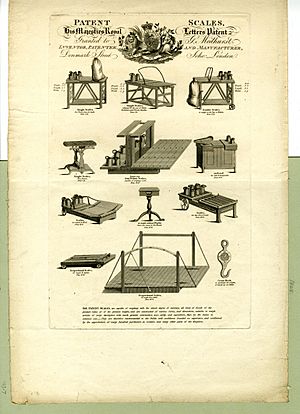George Medhurst facts for kids
George Medhurst (born 1759, died 1827) was an English engineer and inventor. He was one of the first people to use compressed air to make things move. His ideas helped create the first atmospheric railway, which was a type of train powered by air.
Medhurst was born in Shoreham, Kent. He first trained to be a clockmaker in Clerkenwell, London. Later, he became very interested in pneumatics. This is the study of how air and gases can be used to create power.
Inventions and Ideas
Power from Compressed Air
In 1799, George Medhurst got a patent for a special wind pump. This pump could squeeze air to create power. The next year, he patented his 'Aeolian' engine. This engine used compressed air to make vehicles move.
He wrote a booklet called On the properties, power, & application of the Aeolian engine. In it, he suggested setting up 'Aeolian coach services'. These would be like bus routes, but the coaches would be powered by air. Pumping stations along the route would provide the compressed air.
Air-Powered Transport
In 1810, Medhurst shared a new idea. He wrote about a way to send letters and goods quickly using air. He did not get a patent for this idea.
Two years later, in 1812, he wrote another paper. It was about moving goods and people very fast on an "iron road" (like a railway). His idea was to use a large tube, 30 feet wide, to push carriages with air. He imagined carriages running on rails, pushed by air from a tube under the tracks. This was a lot like how the atmospheric railway would later work.
However, none of these air-powered transport ideas were built during his lifetime. Just before he died in 1827, Medhurst wrote again about using air to move things. He suggested a "New System of Inland Conveyance" that could move goods and people at 60 miles per hour. This would be done without horses or any animal power.
Other Inventions
Medhurst also created other successful inventions. These included a steam carriage, which was a vehicle powered by steam. He also invented a special 'leak-proof' gate for canal locks. Canal locks are like water elevators that help boats move between different water levels. He also made many different types of weighing and balancing machines.


